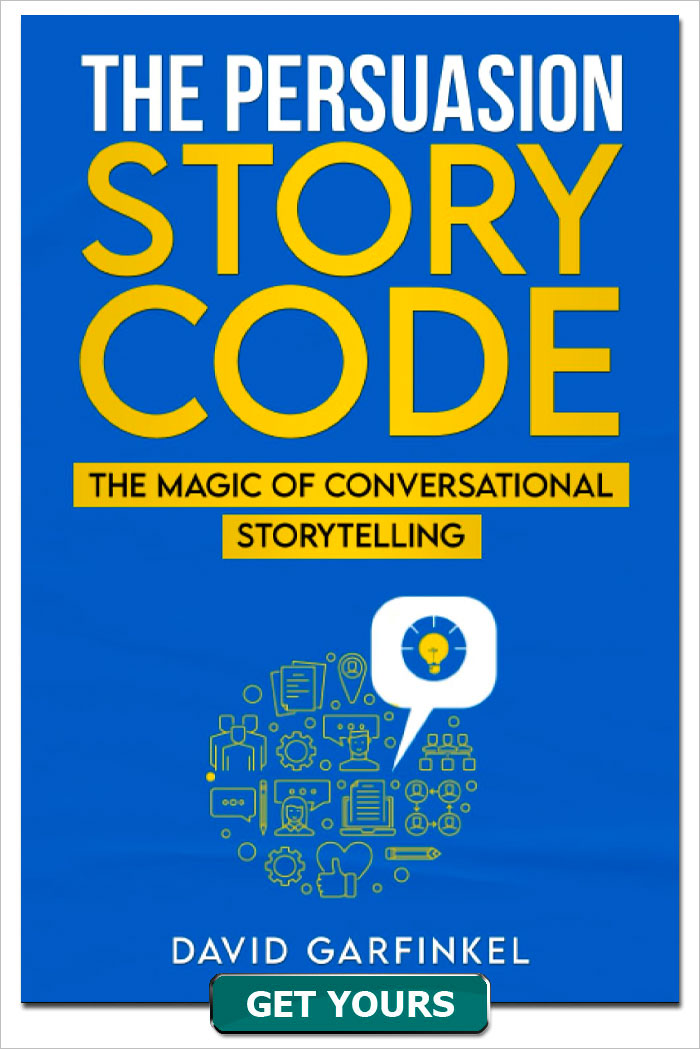Episode 014 - Getting Inside Your Prospect's Head
Published by: David Garfinkel on 07-24-2017
Tweet
One of the biggest keys to improving conversions with your copy is getting inside your prospect’s head. This episode reveals proven methods to do so.
When I held my Breakthrough Copywriting Seminar in 2005, one of my special guests had everyone there on the edge of their seats. It was Brian Keith Voiles. He told us how he got into his prospect’s heads.
I was stunned myself by the thoroughness of what Brian told us.
He said he imagined his prospect (let’s say it was a male) at the start of his day. What did he have for breakfast? What was the conversation he had with his family around the breakfast table?
Then Brian walked us through the whole day, hour-by-hour. Remember, this was all in Brian’s imagination! By the time he got to the end of his prospect’s day, it was clear that Brian knew this person pretty well!
Now I don’t think Brian was holding back one bit. But I do think that there were some steps for him that were so automatic – or so “already built in” based on his years of experience and writing of multiple multi-million-dollar sales letters – that he didn’t even think to mention them.
Steps that came before he would mentally walk through his prospect’s day.
Today we’ll talk about what some of those steps might be. I’ve never talked to Brian about this part of his own process, but I have gone through them many times myself, and coached dozens of other people on steps they needed to take to get deep inside the thoughts and feelings of their prospects.
First, though, my friendly reminder:
Copy is powerful. You’re responsible for how you use what you hear on this podcast. Most of the time, common sense is all you need. But if you make extreme claims… and/or if you’re writing copy for offers in highly regulated industries like health, finance, and business opportunity… you may want to get a legal review after you write and before you start using your copy. My larger clients do this all the time.
Now, onto the mind-reading.
It’s not really mind-reading, by the way. You don’t have to be a psychic to get into the inner world of your prospect.
You simply need to understand human nature, and then apply this understanding to your particular target customer in light of what you have to offer.
• Zero-in on the problem your prospect has, that your offer can solve, and the frustrations your prospect experiences in trying to solve this problem.
- We think in generalities, but we live life in specifics
- Example: Business owner looks for ROI and higher profit margins. But what they think about, as a problem, is:
- the results of not having enough cash flow or margins that are not big enough. Can’t make payroll. Can’t pay taxes. Can’t pay vendors. Can’t take home a paycheck themselves.
- or, the results of what it would be like to have more cash flow and higher margins. A bigger personal paycheck. Hiring more people. Buying better equipment. Taking a vacation. Getting a cool new car.
- To get into your prospect’s head, you need to drill down from categories, clichés and generalities
- The specifics are what resonate and what generate emotions.
- This is where you need to know something about your prospect’s life and their issues.
- But understand, people are remarkably similar in general. They want to get certain things done, or have things done for them, and there are specific things in the way. Your job is to figure out: What’s in the way?
• Understand it’s the unconscious mind that generates the feelings that are reactions to this problem – but the conscious mind is where the feelings get put into the words that create your opportunity to get into your prospect’s head.
- Forget about “logic” and the word “should.” That’s not how the unconscious mind operates.
- It’s seemingly much simpler, but it’s not stupid. This could be a LONG conversation but we’d go off on a tangent.
- For our purposes, let’s say the unconscious mind is very specific, but it speaks a different language. Call that language “emotions” and “feelings”
- Look at it this way. Any time you feel happy or sad, angry or confident, thrilled or disappointed, that’s your unconscious mind talking to you.
- Know (or imagining) the feelings of your prospect is one step. But you still need to home in on what those feelings mean to your prospect.
• Use research to confirm and hone your understanding of what’s going on in your prospect’s mind.
- Let’s say you’ve got an info-product on alternative cures for arthritis. You’ve thought about the initial problems, which are joint pain and discomfort in moving the body in certain ways. Then you take it to the emotions – how does the prospect feel when they try to do this, try to do that? What can’t they do now that they could do if the arthritis pain disappeared? How are they frustrated with other solutions.
- You feel pretty confident about what you’ve come up with. Now’s the time to be like a journalist or a detective and confirm what you’ve come up with.
- You can do this by: talking to people… eavesdropping on conversations where people complain about their arthritis… reading reviews and comments on books about curing arthritis… talking to people, like MD’s and chiropractors, who treat people with arthritis… and getting any other real-world information about what people say, think, or feel.
- Your research results will let you keep, or force you to throw away, what you speculated about up until now. What your prospects actually think, feel, and say is the final authority on what’s going on in their minds.
- When you’ve finally come up with verified information, you’re on the right track to getting inside your prospect’s head.
• Realize the more your prospect feels understood about what he or she is feeling and thinking, the more receptive your prospect will be to learning about your offer, and, to buying.
- The wisdom from the Bible, “The truth will set you free,” is important, but in copy, it’s only the first step. The keyword here is “free.” While the truth as your prospect experiences it is vitally important, it’s not enough. You have to win your prospect’s confidence.
- Don’t simply beat your prospect over the head with what you have discovered.
- You need to show some empathy. For the prospect to be receptive to your offer, you have to show concern and caring for what is true for the prospect.
- Old saying in sales I learned from interviewing Harvey Mackay: “People don’t care what you know until they know that you care.”
- You don’t need to go overboard here. You need to simply acknowledge that this is a problem for them and not make them feel like you are judging or blaming them – or, that you are being simply objective, like a computer spitting out facts.
- Make them feel like you are on their side. Don’t be shy. Make it a genuine human communication.
• At the end of the day, it’s the words you use that resonate most with your prospect that will determine how effective your copy is. But for this to work, there needs to be a lot of smart psychology behind the words you use.
- Simplicity is the key. But don’t confuse simplicity with simple-mindedness.
- You need to use a thoughtful process to take the complexity of a person’s life and experiences and boil it down to a simple way to express it, that rings true with your prospect.
- That’s why this process is so important. Notice you’re going between your own human imagination and specific research to get to the right words and knowledge behind the words.
- The steps again are:
1. Zero in on the problem your prospect has, and how that problem affects their life.
2. Understand the difference between the conscious mind and the unconscious mind. Unconscious mind generates feelings; conscious mind generates words to describe those feelings.
3. Use research to confirm what you suspect is going on in your prospect’s mind.
4. Make your prospect realize you understand how they are feeling, and that you care about that.
5. Choose the words that accurately describe what your prospect is feeling and thinking, and make those choices based on the four steps I’ve just laid out for you.
Keywords: psychology thinking mindset









